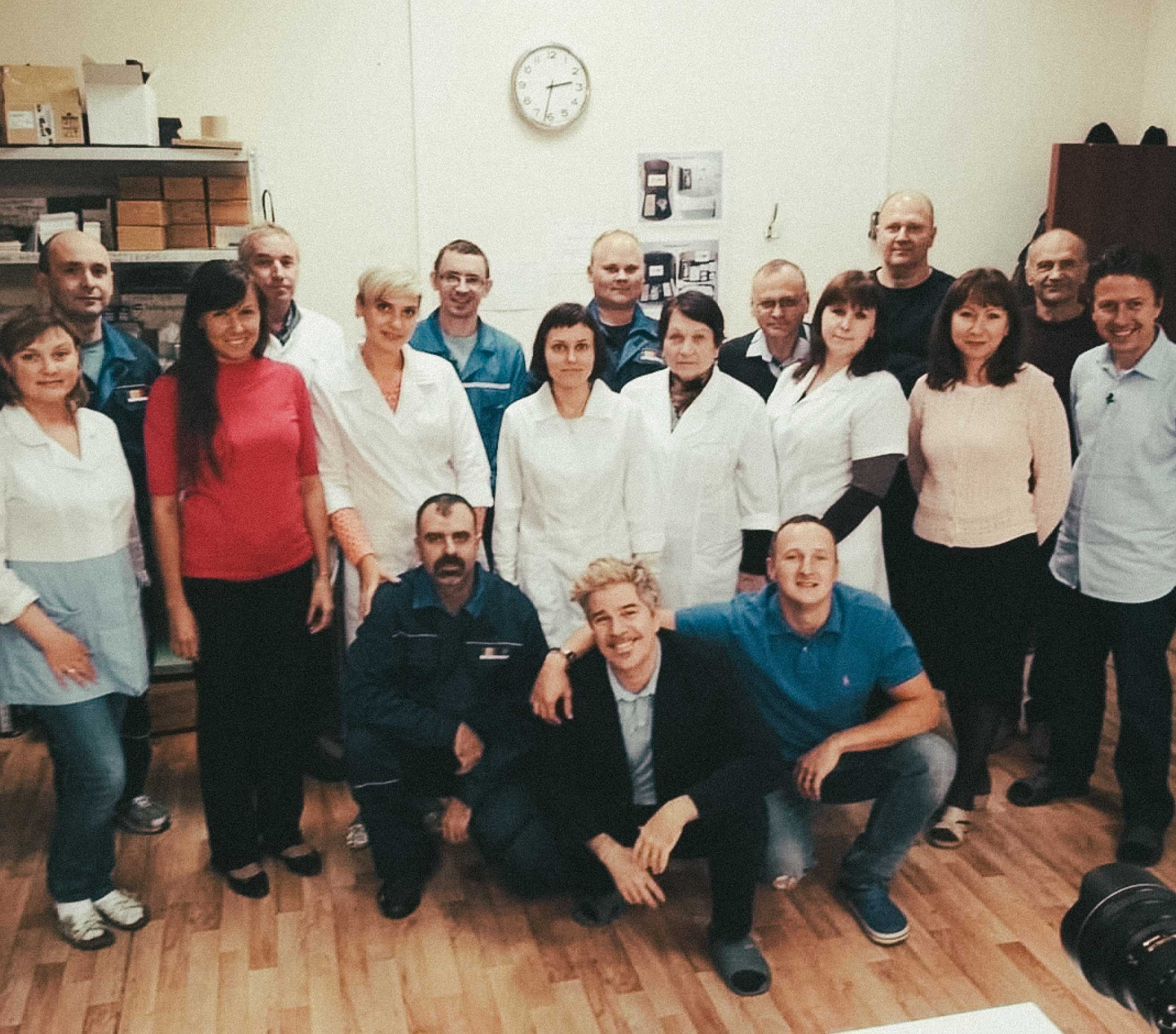
The microphone market is crowded, to say the least, and it’s a daunting task for any newcomer to find a comfortable niche within it. Soyuz Microphones have not so much found a niche as they have launched themselves directly into the big leagues of microphone names. For the past decade or so they have been diligently carving a reputation for eye-catching design and quality craftsmanship, combining the very best in old-school Soviet-era manufacturing with the design-conscious mindset and meticulous quality control of the West. We sat down with co-founders David Arthur Brown and Pavel (Pasha) Bazdyrev to chat about how this ‘union’ started, and where it’s heading…
Hi David, great to meet you! Where are you joining us from currently?
David: I’m actually currently in Barcelona. I live in St. Petersburg, but my studio is here. I lived in Barcelona for 21 years and my kids live here, but I moved to St.Petersburg and come back periodically. St. Petersburg is just fantastic. It has the museums, ballet, classical music. It’s like the kind of rock and roll centre of Russia. Many of the greatest bands came from St.Petersburg, It’s just a very cool place.
Could you describe a little bit about your musical background, and how the partnership between you and Pasha came to be?
David: It all started with the saxophone. I heard John Coltrane and was sold. I saved up money working at a famous weirdo restaurant in San Francisco called Hamburger Mary’s, bought my first saxophone and taught myself to play before eventually starting my own instrumental band, Red Clay. It was a funny time, I was living with Courtney Love, actually. She burned the flat down [laughs]. We ended up playing with Beck, who was an old friend of mine growing up in Koreatown. At some point he asked me come out on the road with him, so for two and a half years or so we toured all over.
Then I started my band, Brazzaville. One day this guy Artemy Troitsky wrote to me from Russia. Turns out he had picked up one of our old CDs at Rough Trade, London, taken it back to Moscow and written a piece about us. I remember we had a gig in New York and these Russian guys came up to us after the show asking for autographs and I asked how they knew about Brazzaville. Turns out this Troitsky guy was a well known music critic and not just some college kid. Our music just kind of resonated with Russians, and then later Turks and Chinese. It’s apparently popular in countries with questionable civil rights records, [laughs] – they just loved Brazzaville!
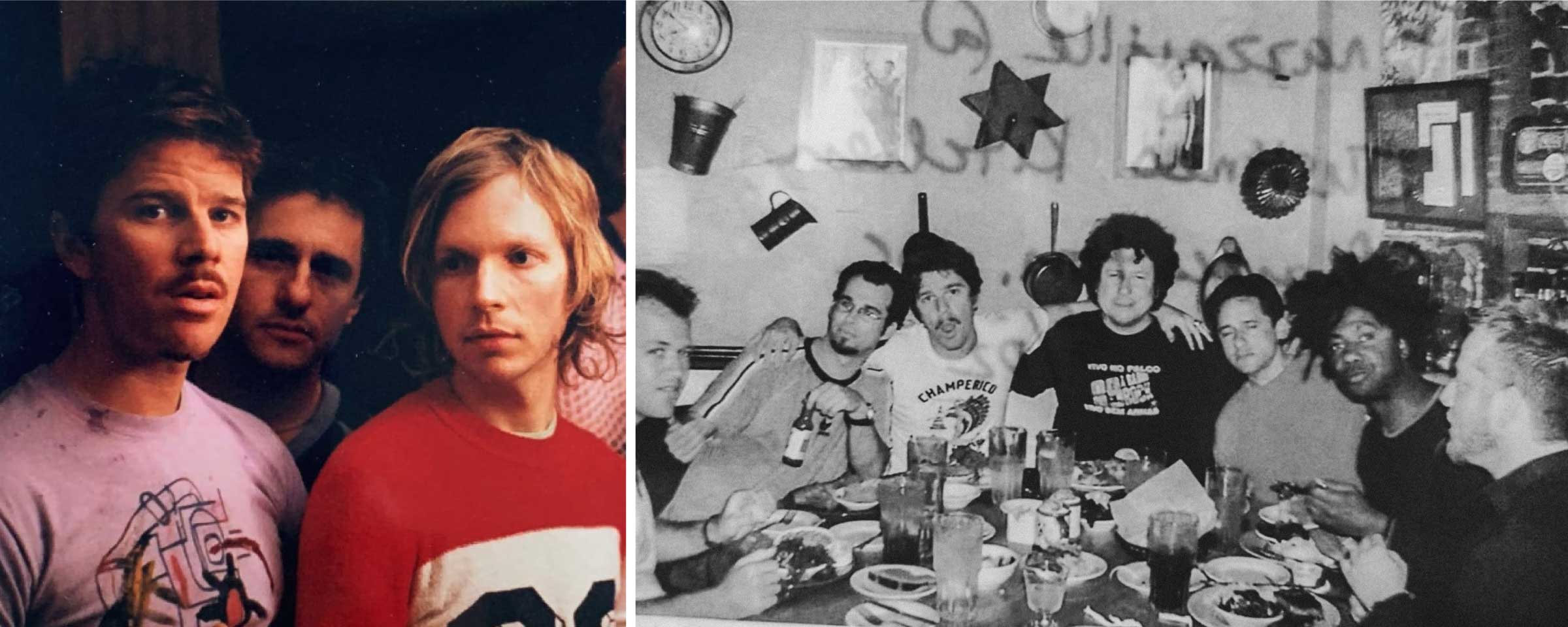
So how did this get you onto microphones?
Back in the nineties in LA, you could buy Octava MK-012s, the very first good condenser mics that weren’t insanely expensive. Years later I was in Russia on tour and I just thought, I wonder where Oktava is? I googled it, and it said ‘Tula’ and I thought, wow, what a pretty name. A week later, I had a solo show in southern Russia, and after the show this guy (Pasha), comes over and he’s like, “Hey, how’s it going? I’m a fan, would you ever consider playing a solo concert in my hometown?”. I said, “where’s that?”, he says, “Tula”. I was like, “no shit!”
Pasha: I asked his manager and he basically said “yes, but only if you can organise a tour at the Octava factory”. I didn’t even know what Octava was. I knew nothing about microphones. I phoned Octava and was like, “hey, I want to bring these American musicians to visit the factory” which didn’t go down that well. Octava were also heavily involved in military manufacturing, so you needed permission from the FSB. Eventually they agreed to a tour so long as it was only half the factory. When we were driving back after the tour I turned to David and said “maybe we should try and help them get back into the American market again?”.
David: My initial reaction was, well, Octava mics were popular back then because they were the only option, but that’s changed now. Then after thinking about it more it occurred to me that there might be something in it. The Russians still do things the way that they did at Neumann back in the 50s, so maybe if someone could just make a Lexus to their [Octava] Toyota, right? A condenser mic that is the same quality level as a vintage U 47 and U 67, but with its own personality. That was the idea.

Pasha: The initial idea was to just manufacture Microphones at Octava, based on our own ideas and high-quality standards. Eventually we came to realise that the only way for us to make it is just to make our own facility and go it alone. The reasoning was sound, but you’re talking about a tiny market, an incredibly crowded market, and a market where untold numbers of brands have tried and failed, so it was scary.
Was there ever a key moment where you knew you were on to something good?
David: We had just built four prototypes of our flagship 017 tube and sent them to different people, one of which was Nigel Godrich, who I knew from the Beck days. I didn’t hear from him for probably two months, until one day I opened my computer and there’s this long email from Nigel basically saying: “Listen, dude, I just tested your mic against my favourite microphone in the world; my favourite U 47. I have about 15 of them and this is the one that I go to every time. I cannot say that I liked your mic any less than my favourite mic in the world.” He ordered a matched pair of them – our very first order.
Pasha: I had my UK visa so I just packed those two mics and flew to London. The boxes had broken in transit, so I ended up spending half the night sat at the door of my hostel trying to glue these boxes back together. People thought I was mad. I did it, and the two mics were delivered the next morning with a bottle of vodka to his assistant. Nigel wrote back saying they’re great. He’s still using them now!
As far as accolades go it doesn’t really get much much higher than that…
Pasha: Right? There was another moment when things weren’t going great, money was tight and no one was buying anything. I received an email from Michael Marens saying, “guys, check this out!”. I open the link and Chris Martin from Coldplay is singing into an 017 Tube from The Woodshed in Malibu.
David: Yeah, I was at AES when this guy, Richard Gibbs, came over to the booth. He’s like, wow, that’s a beautiful microphone! He listened to it, loved it and said “you should put one at my studio – here’s my client list” and it’s Coldplay, Barbra Streisand, you know, big names. So we put one into the studio, but of course no one had ever heard of us so no one would even try it, everyone’s just like, “give me the Neumann!”. Coldplay had been using a U 47 that was borrowed from somebody who needed it back so Rik Simpson, their producer, arranged a shootout to find a new vocal mic for the record. Rich Gibbs basically turned around and said, “okay, look, listen, we can do it here and I’ll organize everything on the condition that you put the Soyuz in the mix!”. So they brought in all these mics – vintage and new Neumann’s and Telefunken’s and then they did a blind shootout… and we won. Rik bought the mic on the spot and it was used exclusively on Chris’ vocals for that entire album.
“The Soyuz was the clear winner in every parameter. That tube warmth, but with a modern clarity not found in a vintage mic. It has, for lack of a better term, a fantastic personality – plus it’s super hot-looking too.” – Richard Gibbs – Woodshed Recording
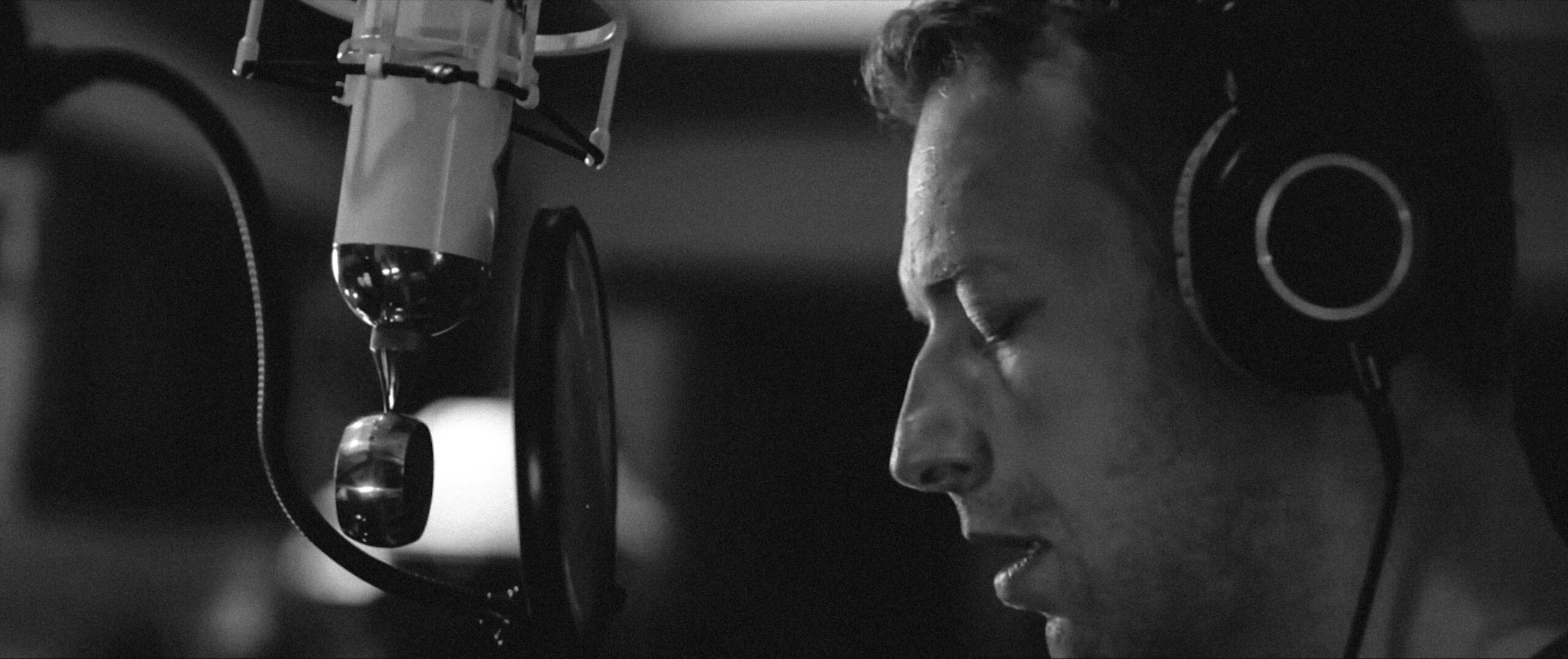
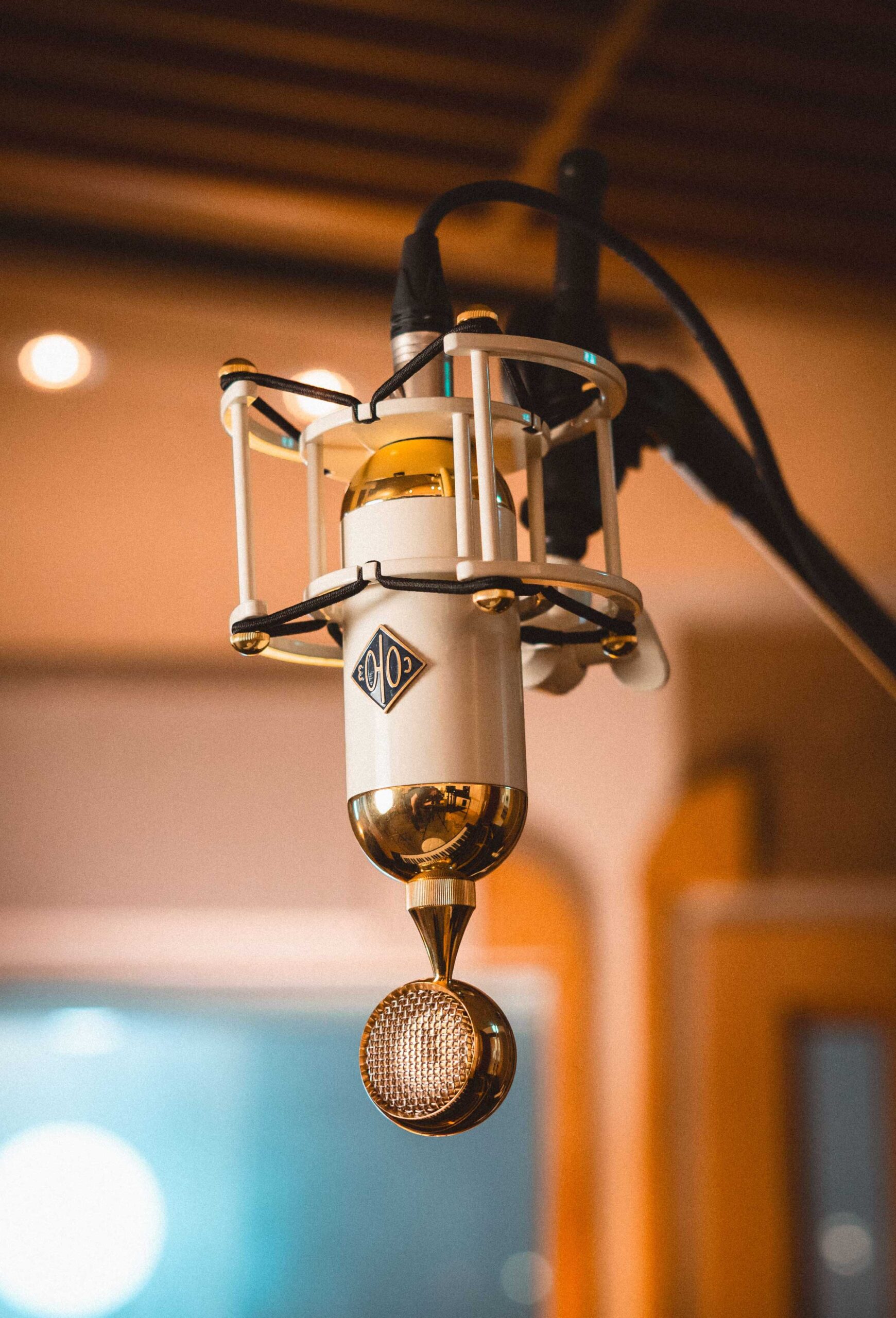
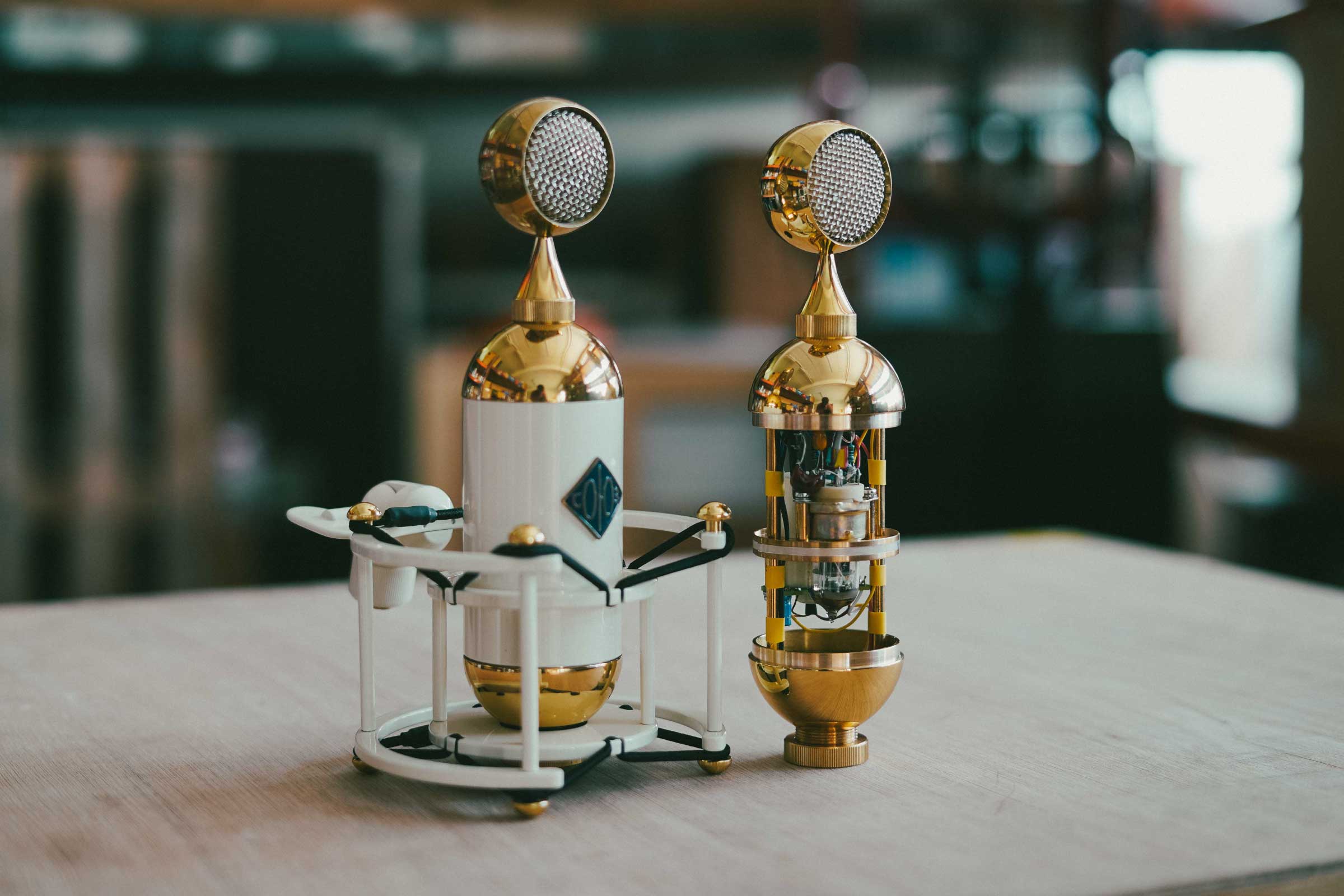
And the 013 FET? People often compare them to original KM84, do you think that’s a fair comparison?
David: It’s its own thing. It has a different character, but there are certainly some similarities with the vintage Neumann’s. When we were developing the 013 FET, one of the things I kept hearing was how good KM 84s were, but not the KM 184s so much. So I went back and I was like, “guys, I want to do an 013 FET with a transformer inside – can we do that? “. We went through about ten different versions with different windings and capsule tunings before settling on the right one. Of the ten, two were the clear winners, but one had better low end and that’s the version we chose. It’s something people often comment on with the 013 FET, how controlled and pleasing the low-end is.
Pasha: It has as much to do with the capsule tension and the transformer as anything else. How you tension it and the thickness of the diaphragm is really important. Too thin and it gets “poppy” with excessive low end, and if too thick, it won’t stretch and will sound thin and gritty. You have to find the correct balance.
There have been a lot of new and exciting new products coming out lately. The Ambisonic mic, and the 1973, which has been a big success. What was the thinking behind that?
Pasha: Once the whole military situation in Russia began, many western brands left the market. There was no more AKG 414 or TLM 102 or 103, and I had been speaking with a lot of our dealers and clients about the prospect of bringing to market a more budget-conscious mic with the same Soyuz capsule, just in a more economical package. I figured there was this gap in the market that we could fill, so I called David to discuss the idea and he very quickly designed a mic.
David: It is almost always the case with with any new product, I’ll send the design to Pasha and our chief engineer, Vladimir will claim that it’s impossible to make it work [laughs]. Eventually, he always finds a way. In this case he designed a resonator that goes in front of the capsule that gets rid of this problematic resonance that he was concerned about. So not only did it become possible, but it had the added bonus of providing a level of plosive protection that you don’t normally have with a condenser mic. It’s an incredibly robust Microphone – Pasha drove his Tesla over one of them.

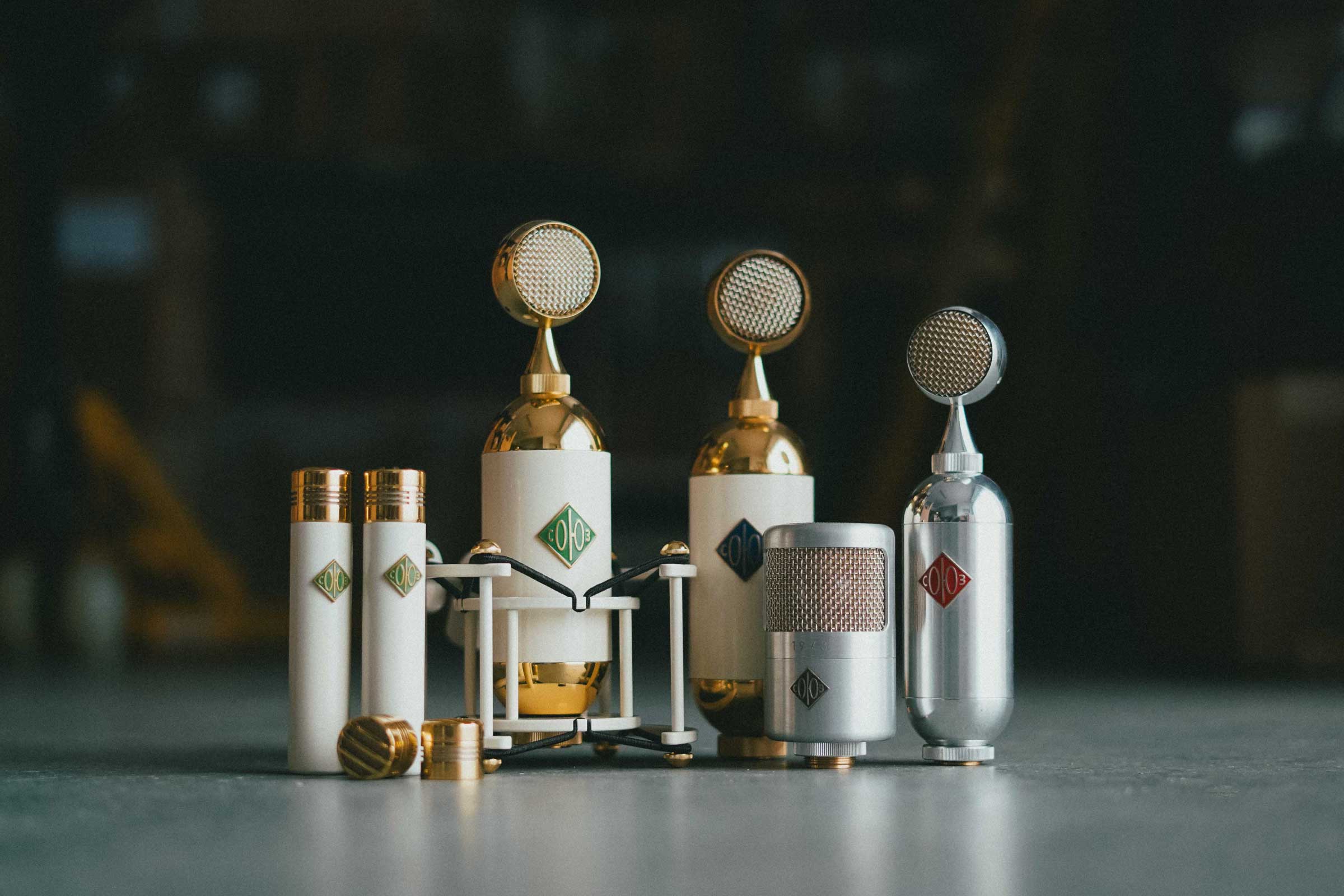

Can we just quickly talk about the Lakeside preamp?
David: Oh my god, I could talk about the pre all day… It’s the most exciting product that we’ve done in years, I would say, wouldn’t you agree, Pasha?
Pasha: Yes, it’s completely new and I have so much faith in it. It sounds fantastic. It’s exceptionally well designed by a very reputable guy here in Russia. He has a very hands-on, old-school approach to design and engineering, so we just took his technology and scaled it for the global market.
David: We like to make things that are very simple, very robust, and very, high quality.
The idea was to make a mic pre that does what it does really well. Design is really important to us. I’m always trying to put the minimum amount of iconography or switches and knobs necessary to get the job done. Even on the Lakeside, there are missing values in the high pass filter, because it just looks like shit to have that much text. I always think people should listen with their ears.
Do you see the future of Soyuz including more in the way of outboard designs?
David: Oh, absolutely. Without saying too much, we have some very exciting projects in the pipeline…
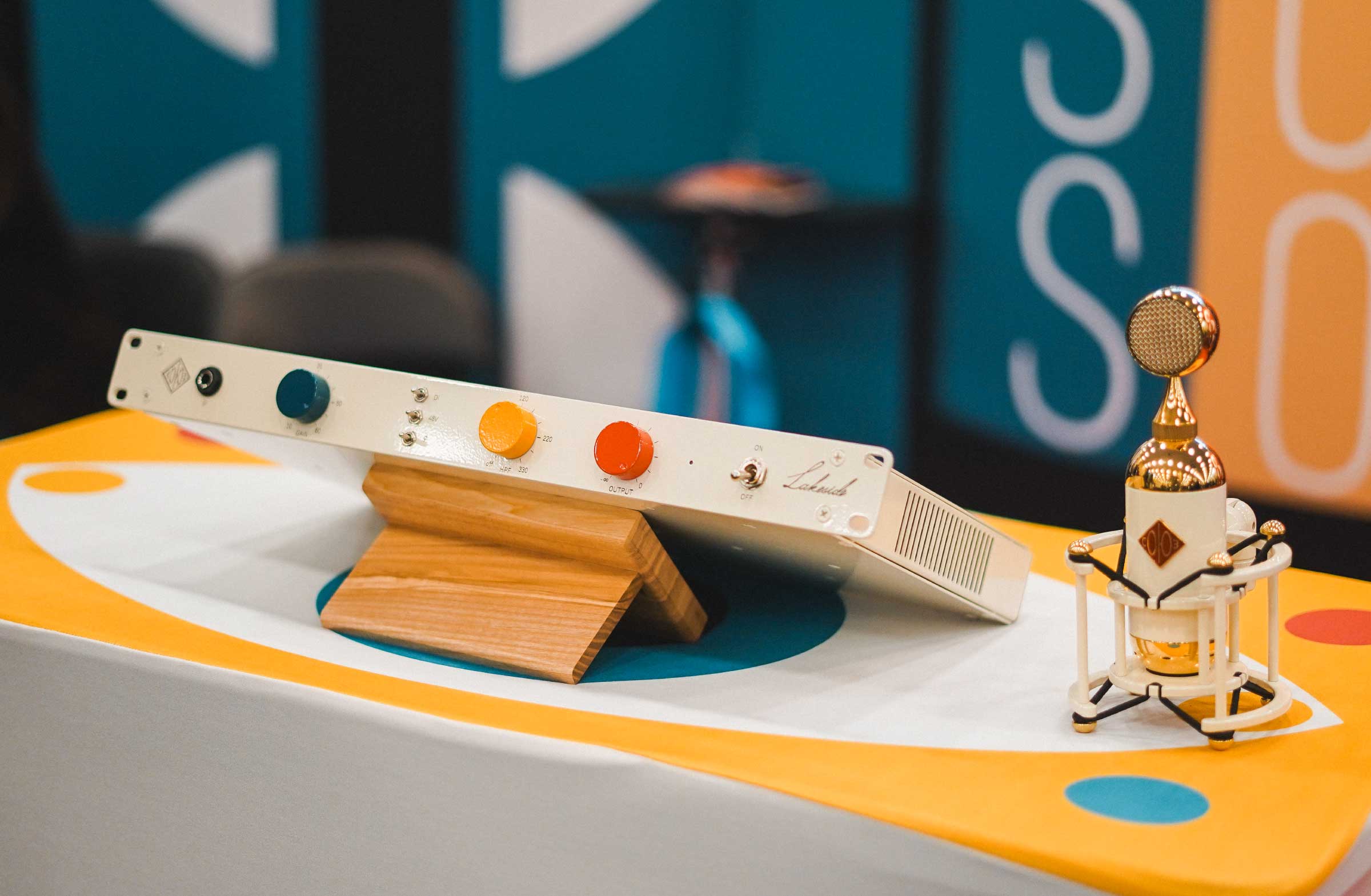
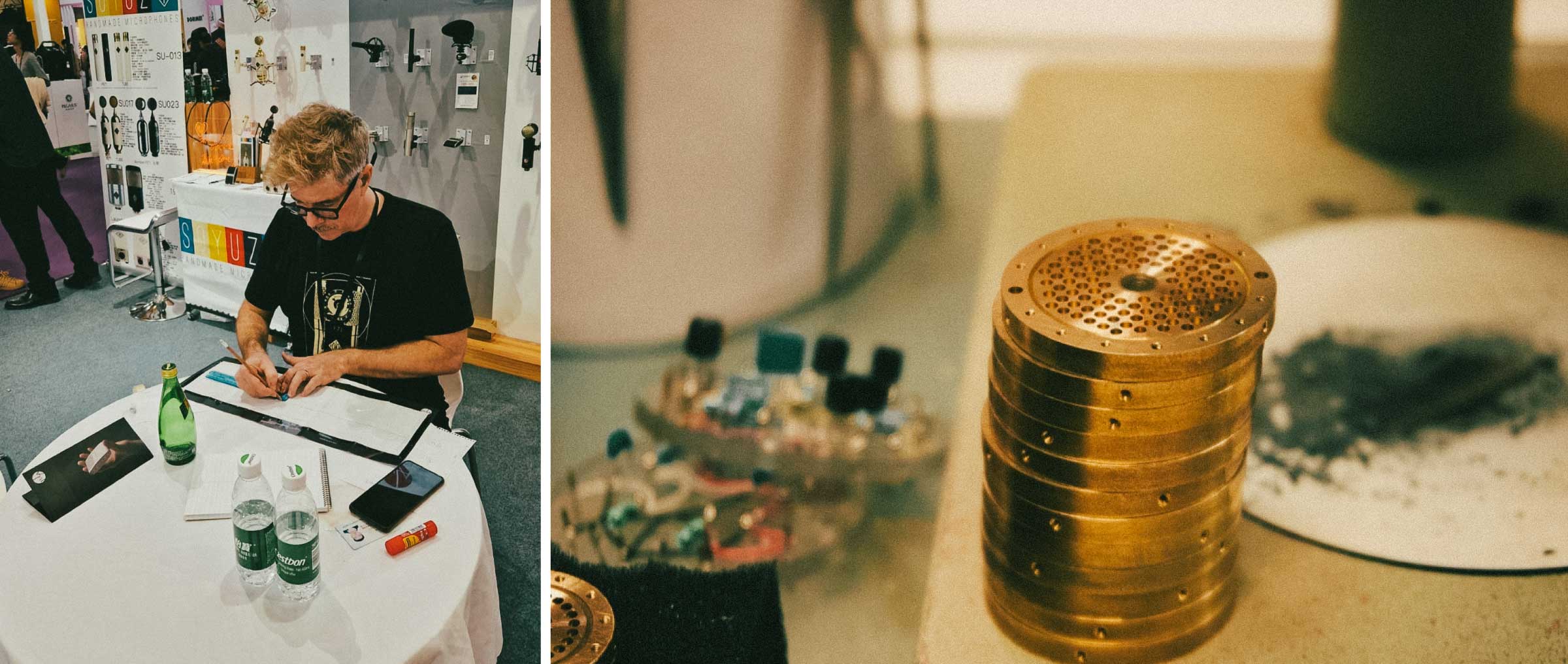
Do you have a favourite Soyuz product, or is that like choosing your favourite child?
David: Oh man, yeah, that would be really hard. I don’t think I could…
Pasha: I personally love the Bomblet. I have a lot of sibilance, so it works perfectly on my voice. I really like the way it’s like little darker, smoother. I also love the stylish design, it’s minimalist and the silver finish looks great.
Do you still write and record music, David? Do you have any other pieces of studio gear you’re particularly fond of, or any contemporaries in the pro audio field that you particularly admire?
Oh, yeah, sure! I have an old Avalon 737 I bought in 2000 and it still works great. I changed the tubes once, I think. I love it. I have a lot of respect for Soma, because I think that they are always striving to make weird, cool shit, which is so refreshing in this world. I’m not criticising people who make copies of cool old stuff, there’s a place for that as well, but it’s not a very creative thing. I don’t think Teenage Engineering likes me very much because they hate that people use the Tula mic with their OP 1 field, but I think they design fantastic gear. Manley too, the Voxbox and Massive Passive are amazing, as are their mics.
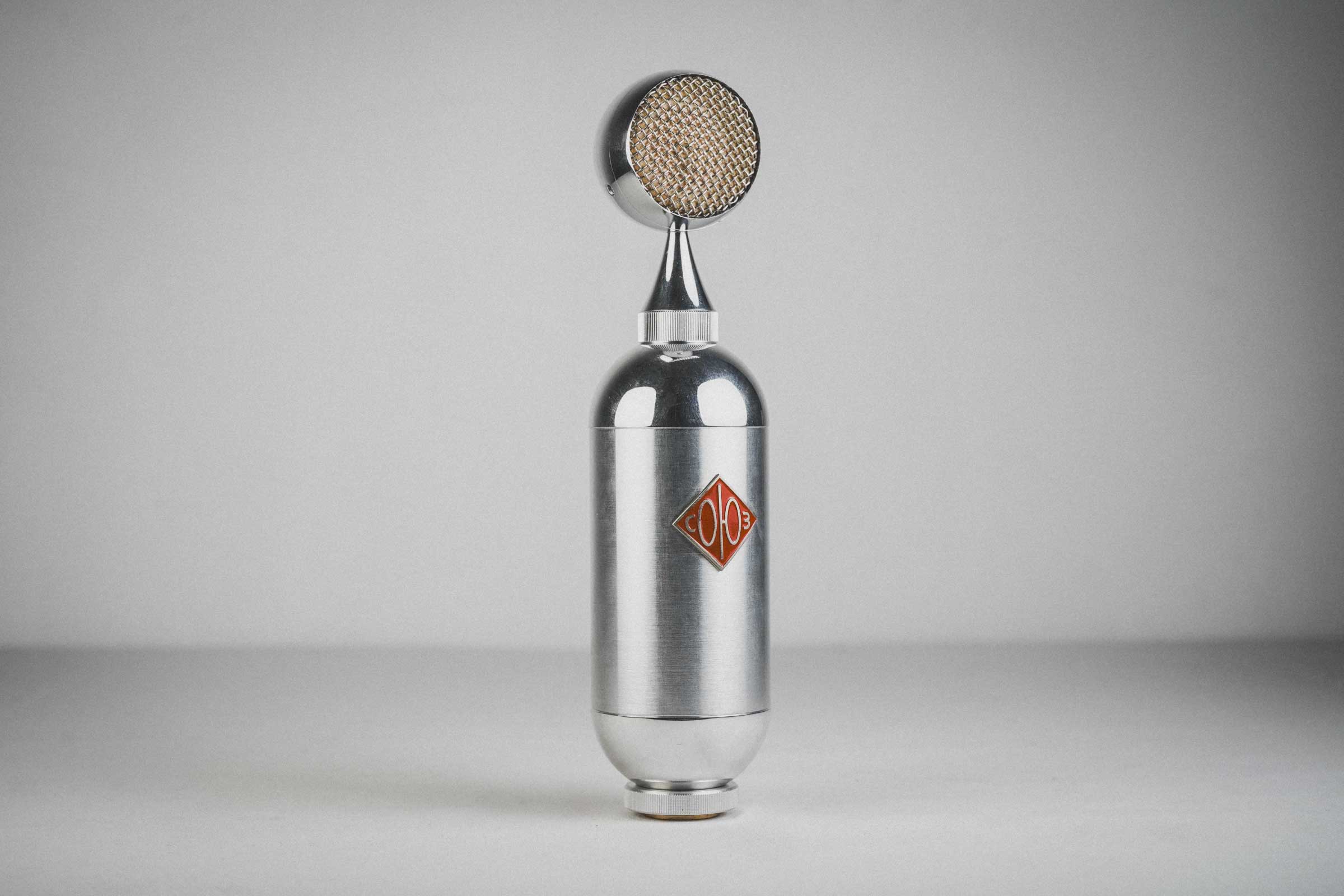
This “Union” of the East and West is not only unique, but obviously works very well. Why do you think that is, and has the narrative shifted at all in light of recent events?
Pasha: It’s hard for me to judge because I’m a Russian living inside Russia. We had always focussed heavily on the whole “Handmade in Russia” thing, which we’ve had to kind of distance ourselves from as people are very sensitive to even the word “Russia”. It’s sad for me that we had to lose an aspect of that storytelling when it is so intrinsic to our identity, As soon as the military operation escalated we instantly jumped on calls to explain the situation. It was important to us that people understood that we’re just regular people doing their job, with no affiliation with what was going on. The irony is we’re actually taking people away from military factories to work on something positive. The word “Soyuz” literally translates to “Union” in Russian, and we are living proof that these two worlds can still work together with great results.
David: I think it’s super important, especially now more than ever, that people understand that people are people. It doesn’t matter where you are, people generally all want the same things; their kids to have a better life, to live in in peace, you know? You’ve got to separate people from politics. I play in Russia, and I play in China, and I play in Turkey. And people would give me grief like, “oh, how can you play there?” to which I reply “listen, dude, if I had to agree with the policies of every country I play in, I wouldn’t play anywhere – I wouldn’t even play in America!”. You can feel however you feel about different geopolitical issues, but at the end of the day, people need music, and stories to offer some respite from their everyday worries.
Even before this all started, Russia and America weren’t exactly bosom buddies, you know? So for me, Soyuz continues to be a great example of two cultures and two countries that rarely collaborate on things to do something together that is beautiful and harmonious. I think it’s a positive example, and we need those today.
